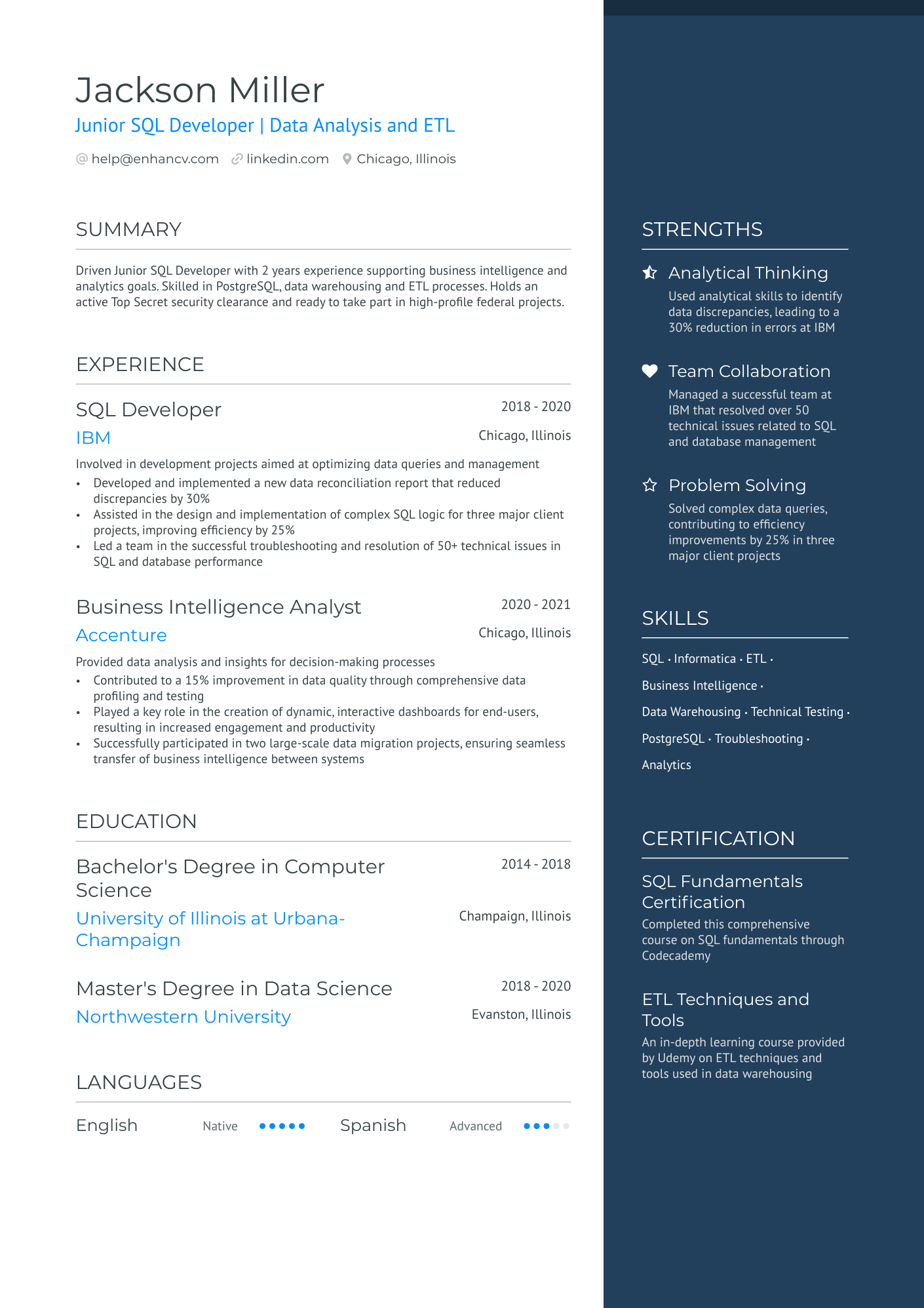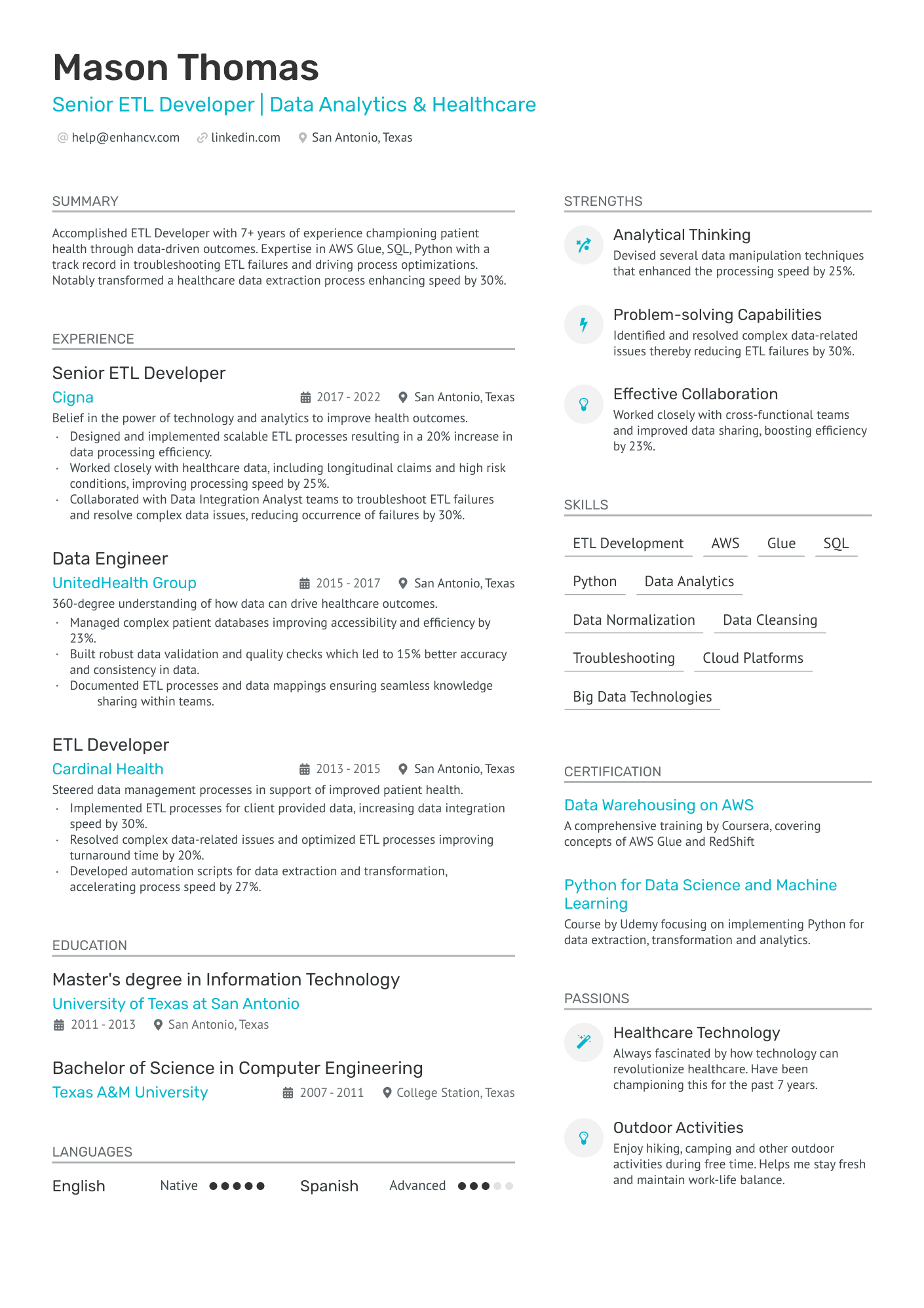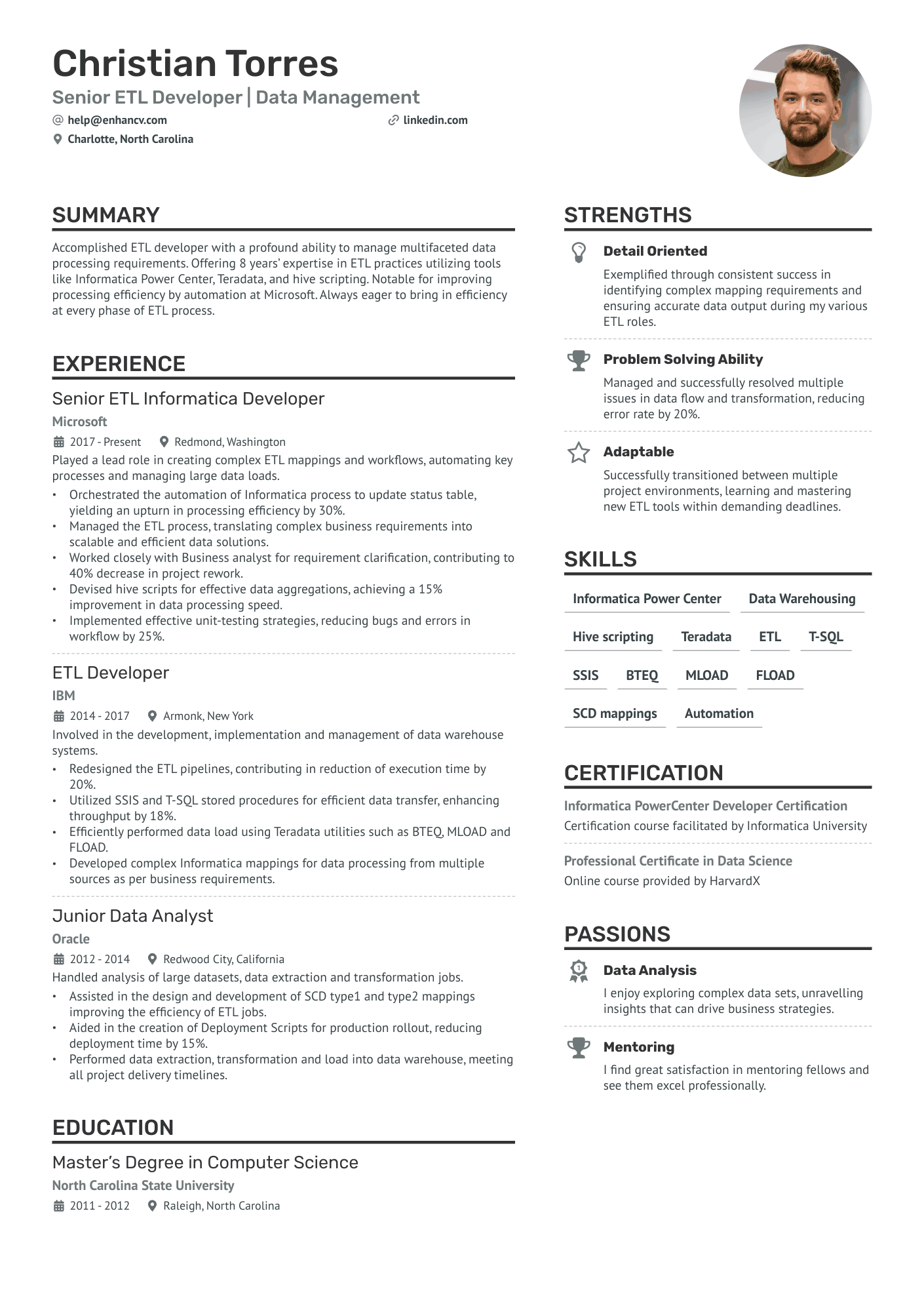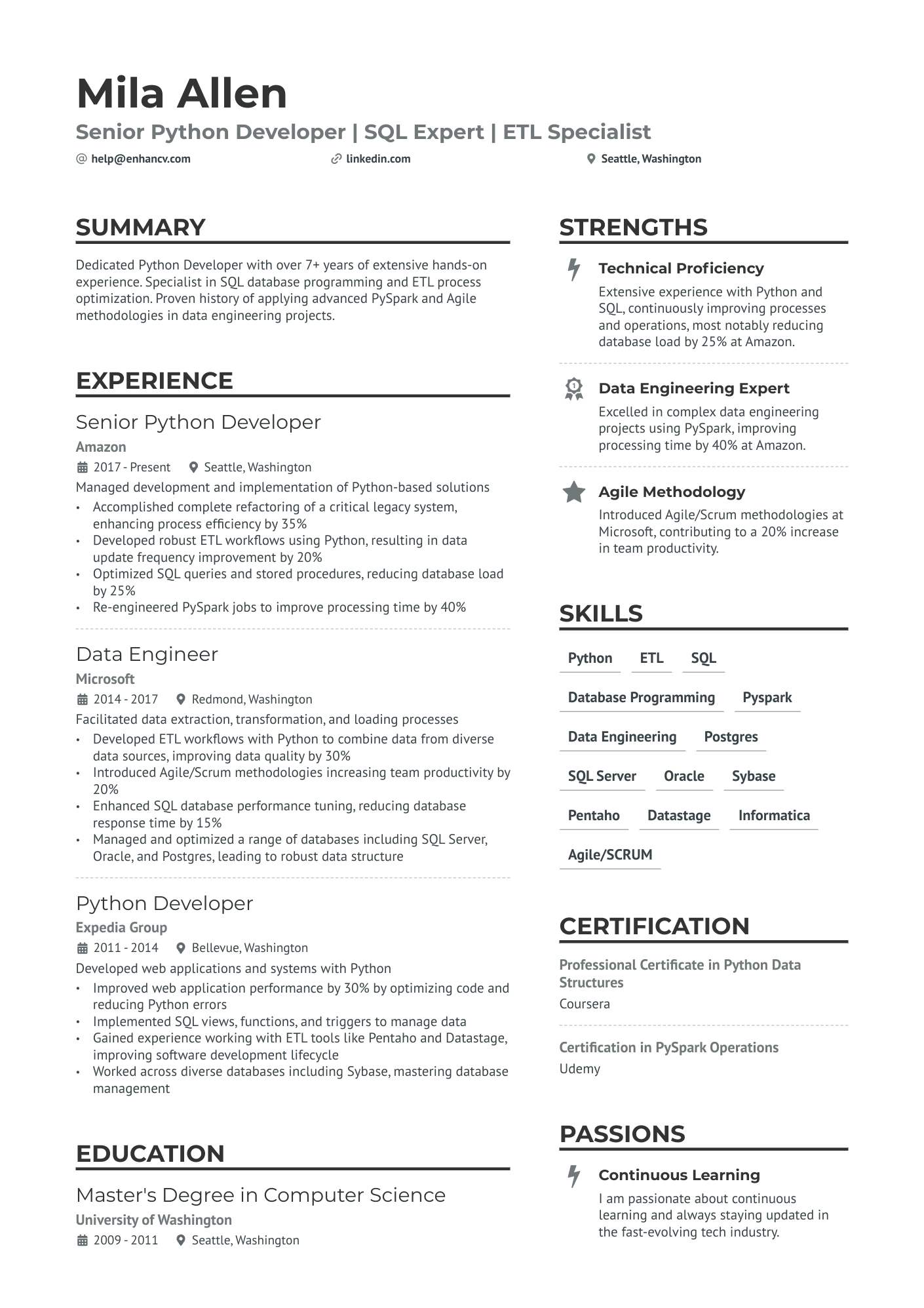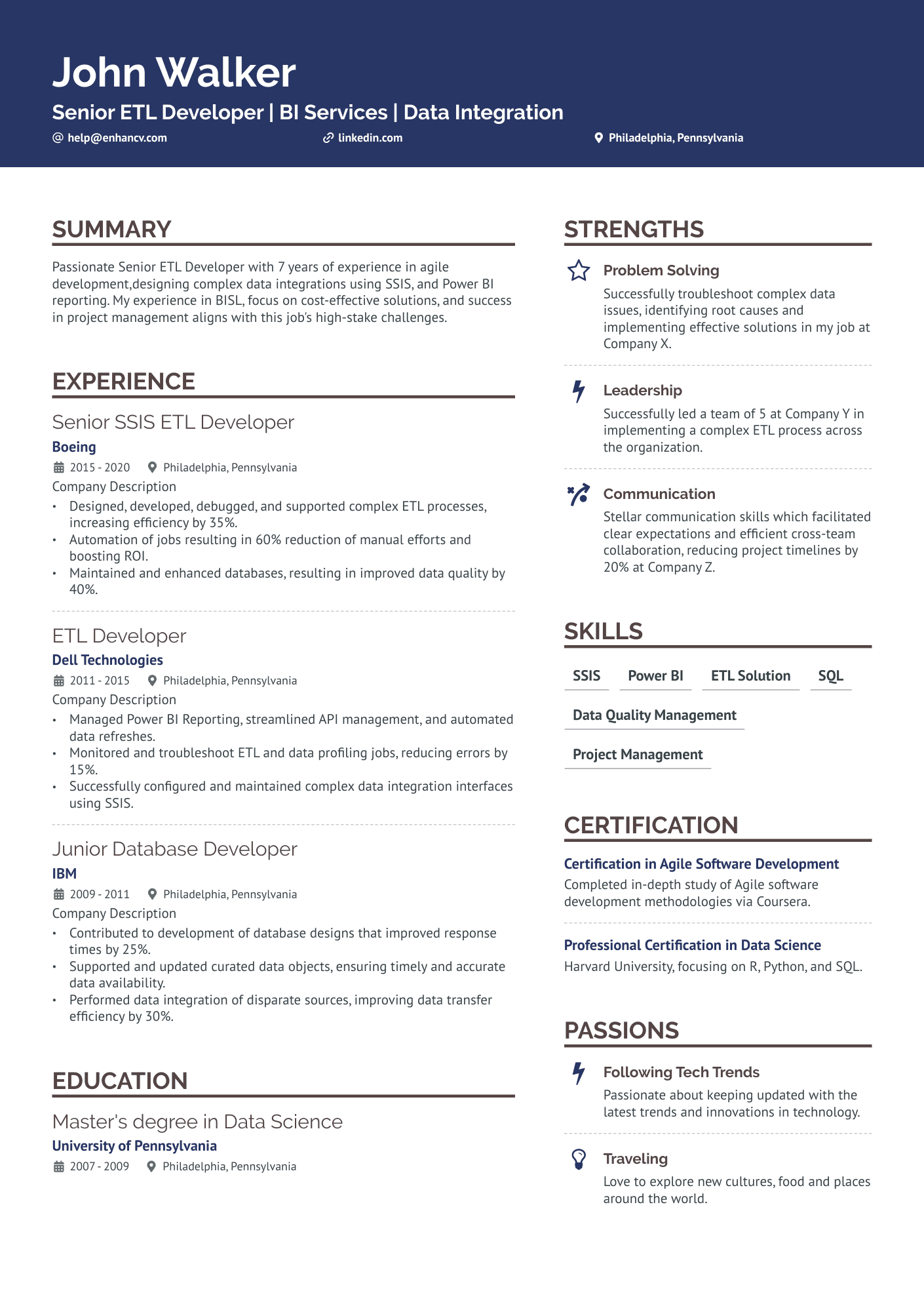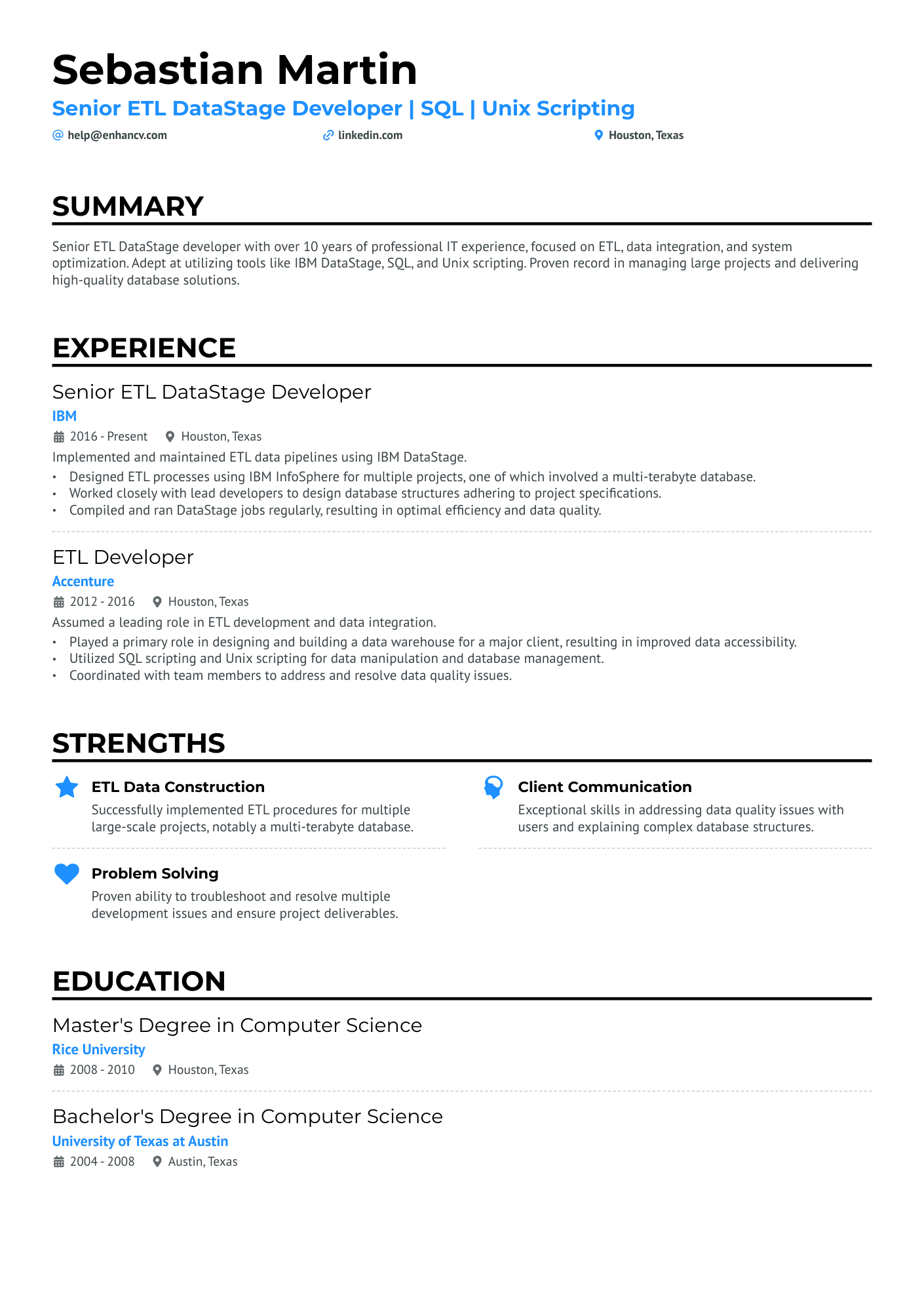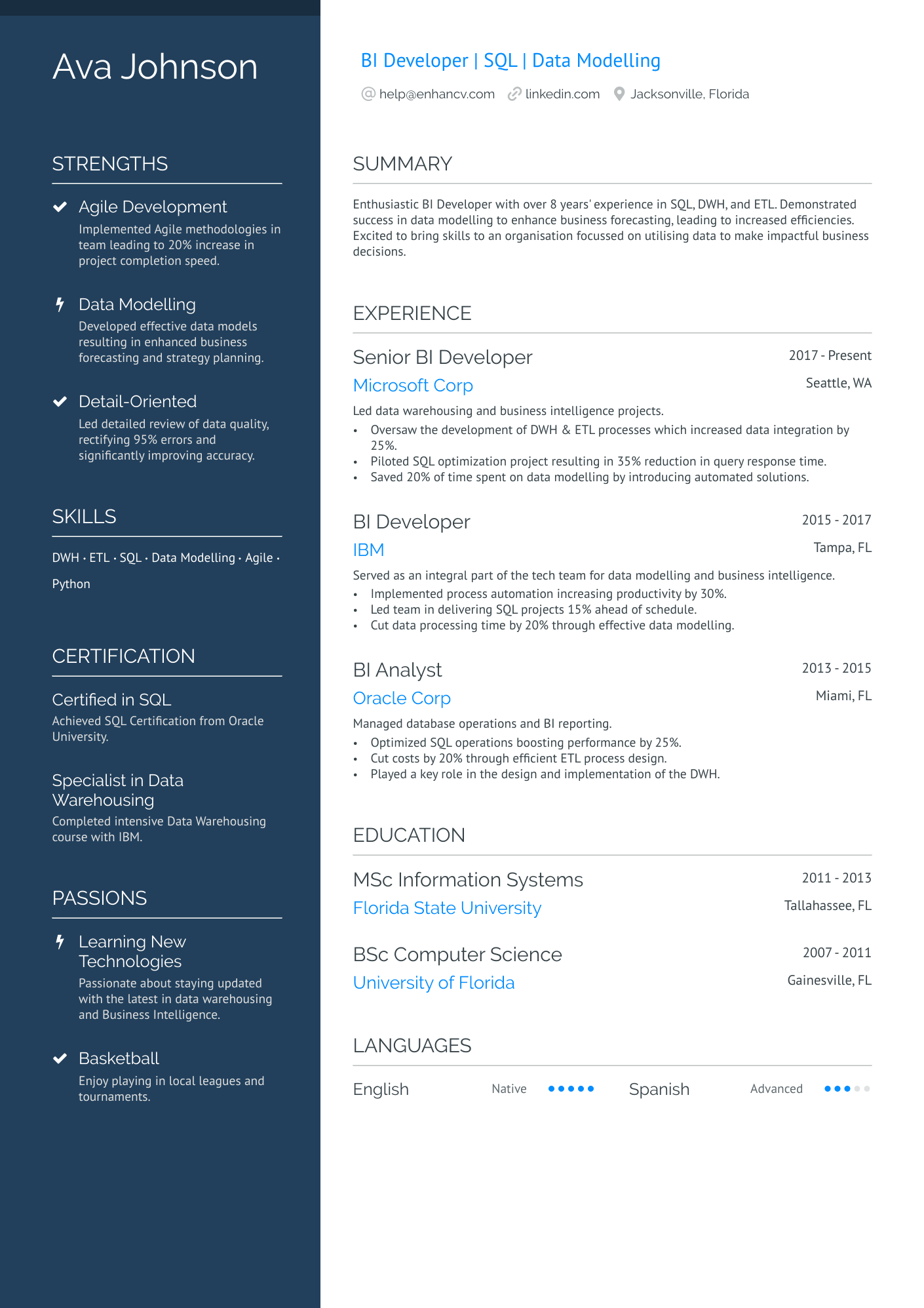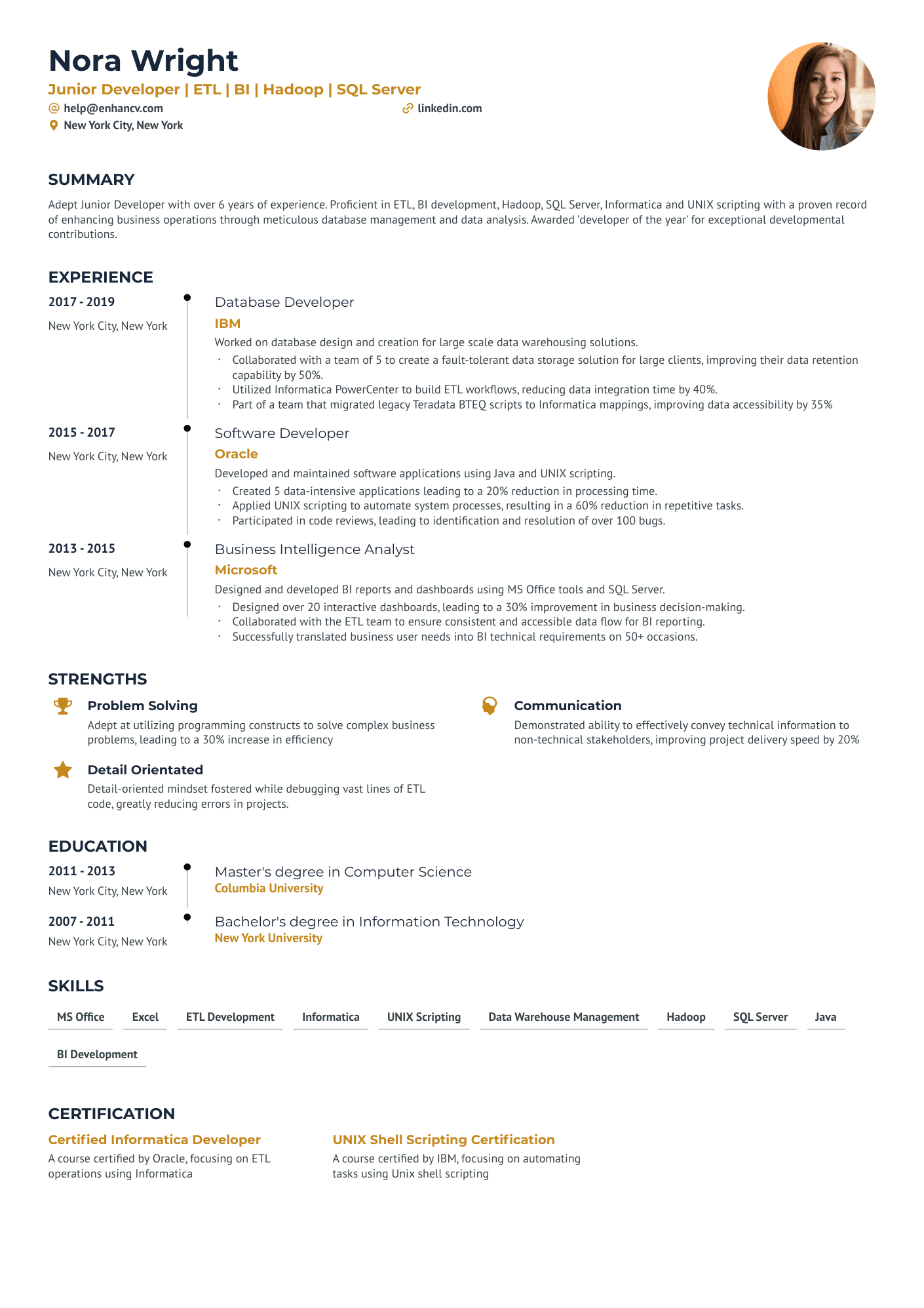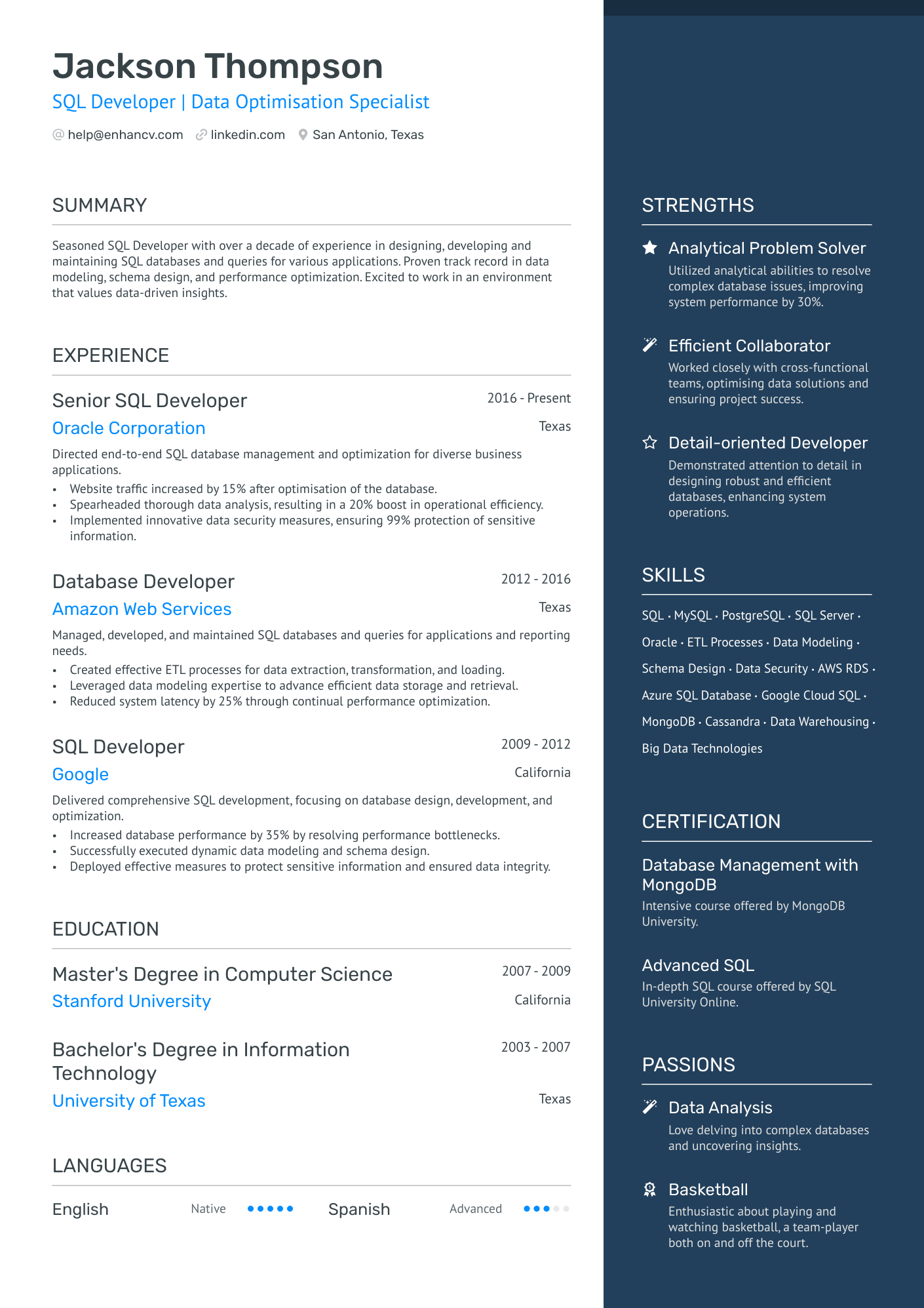ETL Developers often struggle to effectively showcase their technical skills and project achievements on their resumes. Our resume examples provide clear guidance on highlighting these key areas, ensuring your expertise stands out to potential employers. Explore these examples to see how you can elevate your own resume.
ETL Developer resume examples
By Experience
Junior ETL Developer
Senior ETL Developer
By Role
Informatica ETL Developer
Python ETL Developer
The Python ETL Developer role comes straight out of the fields of data engineering and processing, thus why trends in data analytics, big data, and Python programming significantly influence this profession.
Here are some guidelines on how to present a more successful Python ETL Developer application:
- An understanding of ETL (Extract, Transform, Load) procedures and tools is key. Present your experience with ETL processes, emphasizing Python-based tools like Pandas, NumPy, or PySpark.
- Document coding skills specifically in Python. Showcase how your python code has optimized or transformed processes, improving accuracy or speed.
- Prioritize previous ETL projects and your role in them. A considerable proportion of successful ETL developers have a data project background, hence, highlight your technical participation in such projects.
- Don’t just enumerate skills, display how they have contributed to project success, i.e., "optimized data extraction by...”, “enhanced data load speed through..." and so forth. Adhere to the “skill-action-results” format.
